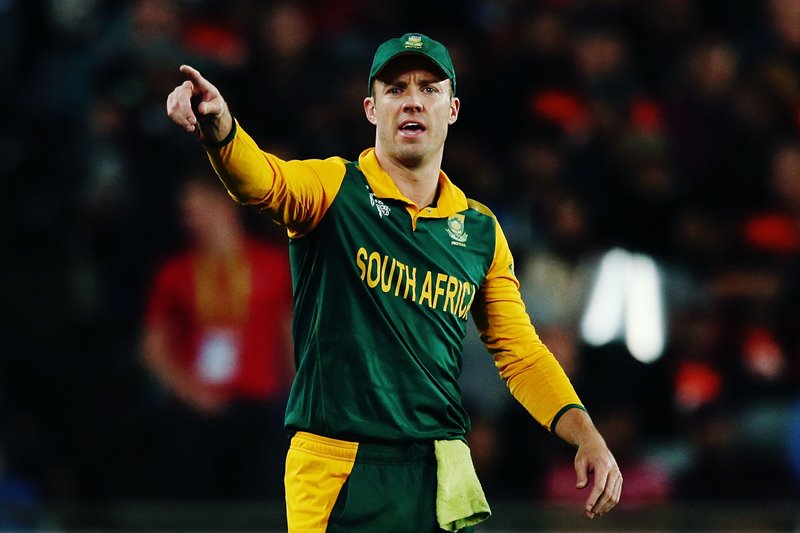AB de Villiers makes some startling revelations in his autobiography
2 Min Read


AB de Villiers, batting maverick of the modern era, has given his fans some deep insight about his cricketing career in his just released autobiography AB: The Autobiography.
The book begins with De Villiers declaring his Christian faith at the fore and later provides the readers with an insight into a childhood and growing years. He talks about his family, his growing up with two elder siblings and his knack to trying things differently. Just like most of autobiographies written by Cricketers, most part of the book has been dedicated to the decade of home series and tours to all over of the globe.
One of the most famous facts about AB de Villiers, which has circulated in the social media space was that he was a multi-talented sport person who excelled greatly in a variety of sports before making Cricket his career choice. Turns out all these were rumours. He says was not shortlisted for inclusion in the national hockey squad of football team, never held swimming or badminton records, and did not play rugby at South African representative level.
He also wrote about the January 2015’s world-record destruction of the West Indies in the second ODI at the Wanderers where he hit a 31 ball century and superb double centuries against India and Pakistan in April 2008 and November 2010 respectively. He has termed these achievements as his most proud moments of his career.
De Villiers also declared his admiration for some of his former and current team mates – Mark Boucher, Faf du Plessis, Dale Steyn and Jacques Kallis. He reveals Kallis as a major influence in his success and terms him as a major reason behind his journey to becoming number one-ranked Test and ODI batsman.
De Villiers automatically creates fears in the minds of the bowlers but who were the bowlers against whom De Villiers struggled the most. He rates England spinner Monty Panesar, Pakistan seamer Mohammad Asif and Australian fast bowler Mitchell Johnson as among his most challenging opposition.
He also gave his opinion the controversial selection of Vernon Philander ahead of Kyle Abbott for the 2015 World Cup semi-final against New Zealand.
The most engaging part of the biography was the penultimate chapter titled, “The Dreams.” It gives an in-depth view of South Africa’s 2015 Cricket World Cup. An entire chapter dedicated to his journey in the 2015 Cricket World Cup doesn’t come as a surprise. He reveals that South Africa kept a collective diary in which players made daily entries, and reiterated de Villiers’ conviction that South Africa could lift the trophy.![]()
Despite losing twice in the group stage, South Africa advanced to the semi-final after winning their first-ever World Cup knockout match beating Sri Lanka in the quarterfinal in Sydney.
De Villiers wrote that it was “generally assumed” the same team, which beat Sri Lanka, would play against New Zealand. But, there was a change which raised few questions.
He writes that at 5:30 pm on the night before the semi-final, half an hour before South Africa’s team meeting he got a call that Philander had passed a fitness test earlier and would play instead of Abbott. He did not reveal who had called him,
De Villiers explains how he knew that an incumbent player who is injured “will automatically go back into the team when he returned to fitness”. De Villiers also “sensed the selectors thought Vernon would thrive in New Zealand conditions”, given his ability to move the ball off the seam on tacky surfaces. But, at the same time, he felt that “there could have been other considerations”. This revelation speaks about the quota system in Proteas cricket.
“We had been assured that Cricket South Africa was the only national governing body in the country that had declined to set a target for the number of players of colour to be included in the national team but there was a delicate balance to be struck and it was generally understood that, as they chose the side, the national selectors would be conscious of providing opportunities for at least four players of colour.”
Also, read – Piers Morgan challenges Virender Sehwag on Twitter
“So what had happened? Had Vernon, who was officially classified as coloured, been selected ahead of Kyle, who was officially white, to ensure there were four players of colour in the semi-final? Or had the decision been made for purely cricketing reasons?”
He does not answer those questions himself. Instead, in the book, he details the effect it had on him.
“It depressed me to think of my team-mates in these outdated racial terms,” he writes. “‘Would anyone really mind if there were three or four players of colour in our side?”
South Africa lost the match on the final ball and de Villiers blamed the defeat on their failure to take “five clear opportunities … three possible run-outs and two catches”, and not on the selection saga. “We didn’t lose because of the decision to replace Kyle with Vernon,” he writes.
The most match is more remembered for the heart broken De Villiers leaving the field with tears in his eyes.
He also maintains that “winning an official World Cup with the South African team had become my burning ambition”, which suggest he may play a fourth edition of the tournament, in 2019.
Download Our App